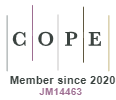Um estudo sobre uso do Open Banking entre universitários na Grande São Paulo utilizando o Modelo de Prontidão e Adoção de Tecnologia (TRAM)
DOI:
https://doi.org/10.5585/exactaep.2021.17453Palavras-chave:
Prontidão tecnológica, Adoção de tecnologia, Open Banking, Tecnologia bancária.Resumo
O compartilhamento de dados bancários de clientes entre as instituições financeiras é chamado de Open Banking. Ele permite a consolidação das informações de diferentes contas bancárias em um único local e a realização de transferências e pagamentos sem a necessidade de acesso a um banco específico. Sua adoção visa o aumento da competição e eficiência no mercado financeiro, e atualmente está em regulamentação pelo Banco Central do Brasil. Este artigo utiliza o Technology Readiness and Acceptance Model (TRAM) para avaliar a intenção de uso do Open Banking entre jovens universitários. Os resultados obtidos indicam que a utilidade percebida é afetada pelo otimismo, desconforto e insegurança, enquanto a facilidade de uso percebida é afetada somente pela inovatividade. Dado que os modelos de aceitação de tecnologia são sensíveis ao contexto cultural de cada país, este estudo contribui para a literatura, e oferece uma visão do potencial de adoção do Open Banking entre a parcela da população que será grande usuária dessa tecnologia.
Downloads
Referências
Acheampong, P., Zhiwen, L., Antwi, H. A., Akai, A., Otoo, A., & Mensah, W. G. (2017). Hybridizing an Extended Technology Readiness Index with Technology Acceptance Model ( TAM ) to Predict E-Payment Adoption in Ghana. American Journal of Multidisciplinary Research, 5(2).
Davis, F. D. (1989). Perceived Usefulness , Perceived Ease of Use , and User Acceptance of Information Technology. MIS Quarterly, 13(3), 319–340. https://doi.org/10.2307/249008
Guhr, N., Loi, T., Wiegard, R., & Breitner, M. H. (2013). Technology Readiness in Customers ’ Perception and Acceptance of M ( obile ) -Payment : An Empirical Study in Finland , Germany , the USA and Japan. In Rainer Alt & B. Franczyk (Eds.), 11th International Conference on Wirtschafsinformatik (Issue 1, pp. 119–133). University Leipizig.
Hair, J. F., Anderson, R. E., Tatham, R. L., & Black, W. C. (1995). Multivariate Data Analysis (4th editio). Pearson.
Hair Jr, J. F., Hult, G. T. M., & Ringle, C. M. (2013). A Primer on Partial Least Squares Structural Equation Modeling (PLS-SEM) (1st ed.). Sage Publications.
Im, I., Hong, S., & Kang, M. S. (2011). An international comparison of technology adoption: Testing the UTAUT model. Information and Management, 48(1), 1–8. https://doi.org/10.1016/j.im.2010.09.001
Kuo, K., Liu, C., & Ma, C. (2013). An investigation of the effect of nurses ’ technology readiness on the acceptance of mobile electronic medical record systems. BMC Medical Informatics and Decision Making, 13(1), 1. https://doi.org/10.1186/1472-6947-13-88
Lam, S. Y., Chiang, J., & Parasuraman, A. (2008). The effects of the dimensions of technology readiness on technology acceptance: An empirical analysis. Journal of Interactive Marketing, 22(4), 19–39. https://doi.org/10.1002/dir.20119
Legris, P., Ingham, J., & Collerette, P. (2003). Why do people use information technology? A critical review of the technology acceptance model. Information and Management, 40(3), 191–204. https://doi.org/10.1016/S0378-7206(01)00143-4
Lin, C., Shih, H.-Y., & Sher, P. J. (2007). Integrating Technology Readiness into Technology Acceptance : The TRAM Model. Psychology & Marketing, 24(7), 641–657. https://doi.org/10.1002/mar
Parasuraman, A. (2000). Technology Readiness Index (Tri): A Multiple-Item Scale to Measure Readiness to Embrace New Technologies. Journal of Service Research, 2(4), 307–320. https://doi.org/10.1177/109467050024001
Parasuraman, A., & Colby, C. L. (2015). An Updated and Streamlined Technology Readiness Index: TRI 2.0. Journal of Service Research, 18(1), 59–74. https://doi.org/10.1177/1094670514539730
Ramírez-correa, P., Grandón, E. E., & Rondán-Cataluña, F. J. (2020). Users segmentation based on the Technological Readiness Adoption Index in emerging countries : The case of Chile. Technological Forecasting & Social Change, 155(April). https://doi.org/10.1016/j.techfore.2020.120035
Rojas-Méndez, J. I., Parasuraman, A., & Papadopoulos, N. (2017). Demographics, attitudes, and technology readiness: A cross-cultural analysis and model validation. Marketing Intelligence and Planning, 35(1), 18–39. https://doi.org/10.1108/MIP-08-2015-0163
Shin, S., & Lee, W. (2014). The Effects Of Technology Readiness And Technology Acceptance On NFC Mobile Payment Services In Korea. Journal of Applied Business Research, 30(6), 1615–1626.
Sivathanu, B. (2019). An empirical study on the intention to use open banking in India. Information Resources Management Journal, 32(3), 27–47. https://doi.org/10.4018/IRMJ.2019070102
Sun, S., Lee, P., & Law, R. (2019). Impact of cultural values on technology acceptance and technology readiness. International Journal of Hospitality Management, 77(June 2018), 89–96. https://doi.org/10.1016/j.ijhm.2018.06.017
Thomas, H., Kimber, A., & Brown, W. (2019). How regulation is unlocking the potential of open banking in the UK. https://www.ey.com/en_gl/banking-capital-markets/how-regulation-is-unlocking-the-potential-of-open-banking-in-the-uk
Tsikriktsis, N. (2004). A Technology Readiness – Based Taxonomy of Customers. Journal of Service Research, 7(1), 42–52. https://doi.org/10.1177/1094670504266132
Venkatesh, V., Morris, M. G., Davis, G. B., & Davis, F. D. (2003). User acceptance of information technology: toward a unified view. MIS Quarterly, 27(3), 425–478.
Downloads
Publicado
Como Citar
Edição
Seção
Licença
Copyright (c) 2021 Exacta

Este trabalho está licenciado sob uma licença Creative Commons Attribution-NonCommercial-ShareAlike 4.0 International License.
- Resumo 850
- PDF 685







